 The application has encountered an unknown error.
The application has encountered an unknown error.
It doesn't appear to have affected your data, but our technical staff have been automatically notified and will be looking into this with the utmost urgency.
Let this one-stop, all-inclusive 3D printing filament guide help you choose the right filament for your particular 3D printing application! Our team of experts performs rigorous testing on every filament supported in Cura LulzBot Edition to ensure premium results.
What goes into developing slicing profiles? “On average, a new filament can take a month to get through initial testing to make sure the product is of a high enough quality and consistency," said Angie Suiter, Aleph Objects Engineering Technician. "After that, it goes into another process of perfecting the printer’s settings through Cura LE. We use different environments and different models to ensure the most versatile and reliable profile we can provide.”
The latest version of Cura LE includes the built in support for all of the premium 3D printing materials available through LulzBot.com, and more. Choose the perfect material for your needs, load your 3D model, click, and print! Install the current version of Cura LE , as our team of experts are constantly adding new filament compatibility and updating our slicing profiles to provide you with the best 3D printer filament support and overall experience.
PLA is one of the most commonly used 3D printing materials. It's affordable and easy to use, and comes in a huge assortment of colors! It's a unique thermoplastic polymer in that it's derived from renewable resources like corn starch. This material is biodegradable and excels when used for indoor, room-temperature applications.
This material is stiffer than ABS, and is an excellent choice for rapid prototyping and classroom applications. It's also the ideal material choice for dual-extrusion 3D printing, as it adheres well to not only itself, but PVA-based soluble support materials.
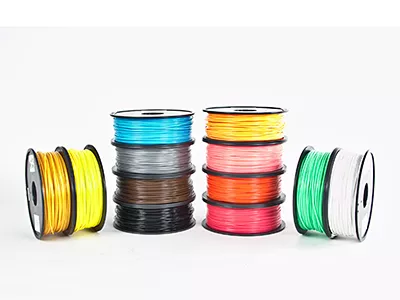
This legacy material was the go-to choice for consumer-grade thermoplastics. This material is found in many of the consumer electronics around you right now, due to its strength, resilience, and slight flexibility.
How strong and durable is ABS? Strong enough to use in your LulzBot 3D Printer! Almost all of the 3D printed parts are ABS, and were 3D printed in our in-house LulzBot 3D Printer cluster. Objects printed with ABS also do well in high-temperature applications, and can be post-processed in an acetone vapor bath for a smooth, shiny finish.
ABS works well at sizes at, or smaller than many of the 3D printed parts found on your LulzBot 3D Printer. Due to the shrink rate of styrene-containing materials, users should use an enclosure to minimize warping and cracking, especially when printing larger objects.
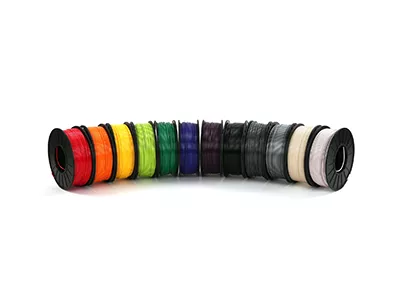
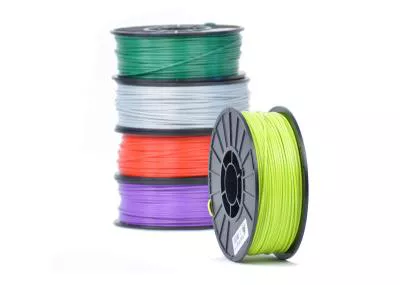
Polyamide materials are extremely tough and durable, producing prints that are flexible and wear-resistant. Nylon filaments fall into this category, and they’re widely praised for being ideal for weight-bearing parts, and parts subject to friction or repeated flexing.
Polyamide materials are heat and chemical resistant, so objects printed with these filaments hold up extremely well in high-demand environments. Some of them can also be dyed with household dyes to produce a number of color effects.
CPE (co-polyester) filament is an excellent choice for prints requiring dimensional stability, high strength, and long-term fatigue performance. These materials have a high degree of chemical resistance and temperature resistance, making them ideal for prototyping, robotics, and automotive applications.
The CPE family of materials pair well with the application of PVA-based glue stick to the print surface to either act as a release agent, or conversely, improve adhesion to the print surface. Refer to Cura LE for details.
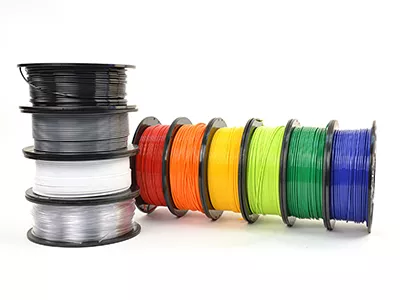
PC (polycarbonate filament) is highly heat-resistant and one of the stronger filament types available. It’s ideal for objects that need significant impact resistance and ductility – this is the same type of plastic used in the manufacturing of bulletproof glass. Polycarbonate is sometimes added to other filament types to give them a strength boost.
We highly recommend using an enclosure when printing with polycarbonate materials to mitigate parts warping and lifting from the heat bed.
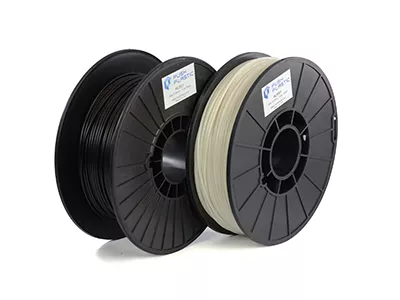
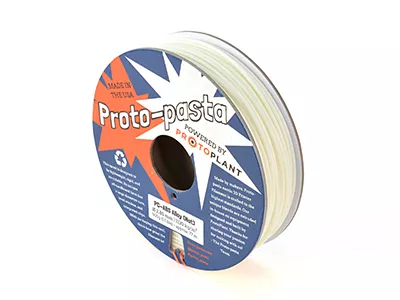
Thermoplastic Elastomers (TPE) are flexible, durable 3D printing materials. TPU (thermoplastic polyurethane) is a type of TPE.
The rigidity level of flexible materials varies—choose the level of stretch and flexibility to suit your needs. These materials demonstrate high tensile strength and bond well to ABS and PLA. Use flexible filament for complex, dual-extrusion prints like live hinges, printed-in-place gaskets, and overmoldings.
Because TPU adheres extremely well to the PEI print surface, we strongly recommend applying PVA glue stick prior to printing.
PVA-based filaments are water soluble, making previously impossible printing projects an attainable objective. PVA-based materials typically dissolve completely in plain tap water in about 24 hours. Unlike other commonly used support materials that require harsh chemicals to dissolve, PVA can be disposed of in the trash without the need for specific waste disposal considerations.
These materials are extremely hygroscopic (will absorb water from the air), so keeping them in a dry, sealed environment with a fresh desiccant pack is critical for print quality.
PLA can be combined with copper particles, bits of bronze, or even wooden fibers to create unique materials that exhibit all the cosmetic appearances of the added material. Objects printed in wood-bearing materials can be sanded to a nice, smooth finish, or stained/varnished for wood grain effects. Metal-infused prints can be polished to a metallic shine or oxidized for a patina finish.
Due to the particulates in these filaments, we strongly recommend using a LulzBot Tool Head with a nozzle size of 0.5mm or greater.
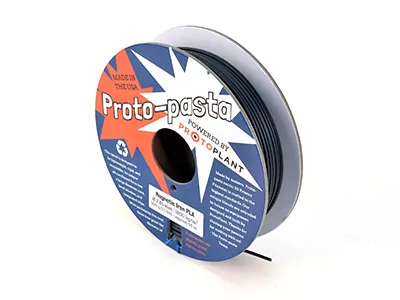
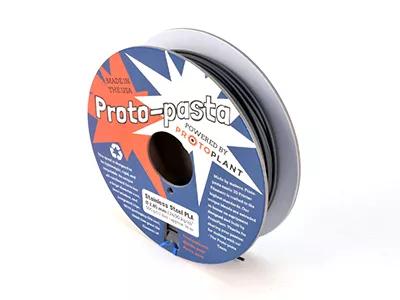
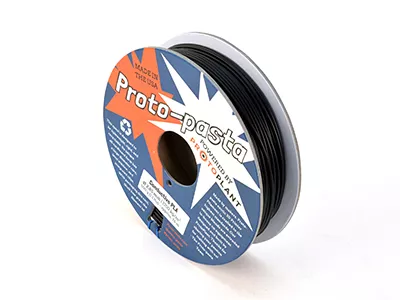
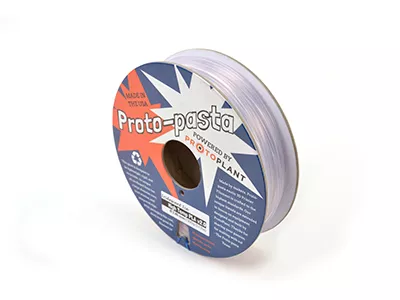
HIPS is a lightweight, affordable material that is favored for its versatility. This filament is a synthetic copolymer, combining polystyrene and polybutadiene rubber for a tough filament with a fair amount of give.
Because of its affordability it's frequently used for pre-production prototyping. It can also be used as dedicated support material in dual extrusion 3D printing, as it is soluble in Limonene, a lemon-based solvent.
From: colorFabb.com
A special point of attention is the abrasive nature of the carbon fibers. In general these fibers will accelerate the nozzle-wear of brass nozzles, much faster than unfilled filaments. Therefore we recommend to use nozzles made of stainless steel or hardened copper alloys.
While it's tempting to try using filament containing carbon fiber, many users are reporting trouble extruding after using that material, even from different vendors. We've seen people that wear out the inside of their nozzle, not to mention having lingering extrusion issues after switching to more common filament types. One of the benefits of carbon fiber containing materials are its strength, similarly to good quality plywood. The interlocking long carbon fiber strands give the material a super-strong core. All the filaments we've seen so far however, don't have that same kind of long carbon fiber strands, so your prints are similar to Oriented Strand Board (cheaper plywood with smaller fiber length), which isn't as strong or as durable. That somewhat defeats the purpose of using carbon fiber materials. We find that for applications needing high-strength printed parts Nylon is a great material. While a bit slower to print, the parts are much, much stronger.